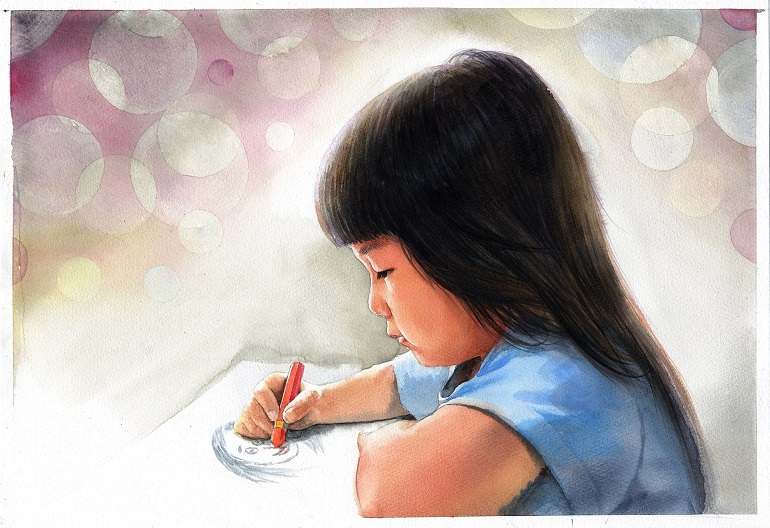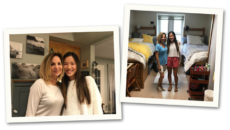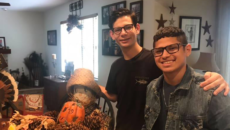I am the white, single mother of an eight-year-old Asian girl, whom I adopted when she was six days old. As you can imagine, I have given a lot of thought to “the daddy question.” The party line from experts goes like this: “Just explain to your child that all families are different. Some have one child and some have many. Some have a mother, but not a father. Some have a father, but no mother. Some have two mothers and no father. And yet others have two fathers and no mother. If it’s not an issue for you, it won’t be for your child.” This made perfect sense to me—until my daughter started school.
The Family Topic
When Julie turned four, she was in her second year of preschool. Despite the fact that I had chosen the loosest, most nurturing preschool I could find, her class had a curriculum. And one topic was “the family.” We live in about as diverse a neighborhood as there is, but Julie and another little girl were the only kids in the class who came from non-traditional families. The other girl’s parents were a lesbian couple.
I feared that the family topic would spell trouble. Julie’s teacher, Amy, insisted that it would be fine. “I’ve taught this many times,” she said. “All the children come away enjoying our diversity. They feel that we’re all part of a beautiful rainbow.” One phase of the project had the children placing paper dolls next to their names. Big dolls stood for parents and little ones were for children. Only Julie’s name had one big doll next to it.
Julie is well liked by the staff and the children, so I knew the questions her classmates asked were not meant to hurt her. I’d overhear them in the playground: “How come you don’t have a father? Is he dead?” Julie’s answer was, “No, I just don’t have one.”
I said to Julie’s teacher, “If you want to teach the family topic in a respectful way, you have to make a distinction between families of procreation and the families we live with. Then, ‘we’re all different’ will make sense.” “Oh, I couldn’t do that,” Amy replied. “A lot of parents would object.”
Still worked up, I started to campaign against celebrating “Father’s Day.” (I would have gladly skipped Mother’s Day if it got Julie off the hook for Father’s Day.) When we started to toss ideas around, Amy tried to come up with alternatives, like a card for a “close, male relative.” Well we don’t have one. And even if we did, a close male relative is not a father. Then Amy insisted that even if Julie got upset, her class was “a warm, safe place, perfect for working through her feelings of loss.” I replied, “Our home is a warm, safe place, perfect for working through feelings of loss.” Finally the school agreed to change its traditional Father’s Day celebration into a Day for Loved Ones. Luckily the term ended a week before Father’s Day, and the card-making project was nixed.
A Different World
When Julie started kindergarten, she got a warm, wonderful teacher named Wendy. My daughter made a terrific adjustment, and little did I suspect that yet another family project was on the horizon. When I got wind of it, I approached Wendy and begged her not to teach it as planned. “I’ve been teaching this unit for 16 years,” she told me. “I’ve never had a problem. Julie is a strong girl; she’ll do fine. Maybe it is your anxiety and not hers that’s operative. This is a warm, safe environment, a perfect place for Julie to work through her feelings.” I got nowhere. And of course, on the day the project began, kids came up to me and asked, “Is it really true that Julie doesn’t have a father?”
This time the project was a little more complex, with parents interviewed in class, including a few who were divorced. One girl’s mother lived in another country, so she lived with her father and grandmother. There was also one other child who was adopted. When her mother came to speak, she emphasized that adoption took place because, “Nancy’s poor single mother couldn’t take care of her and wanted a better life for her child. A life with a mother and a father.” Again, I was the lone single mother by choice. And Julie was the only kid without a father. When it was my turn, the first question was, “Is it true that Julie doesn’t have a father?” Before I could answer, Wendy chimed in with “We’re all different.” I said, “Actually, that is not true in this class. But you are going to meet some other families like ours.” I arranged for a teacher who was single and had adopted a child from China, and a student teacher, whose father had abandoned her at birth, to come to the class to be interviewed.
During the time when the project was going on, I heard Julie talking in her sleep. She said, “These animals are different. Put them over here.” Somehow, I don’t think she incorporated the idea that “it’s good to be different.” She also insisted that when I came to be interviewed that I not talk about her adoption or the fact that she has no father. And no matter how hard I tried, Wendy never incorporated the idea that talking about how different families celebrate Christmas was not the same as talking about being adopted by a single mother.
Julie’s schools used an outdated model of family, which subjects children whose families are not formed in the traditional way to uncomfortable questions. Julie is welcomed, actually adored, at school. No one thinks less of her because she is the adopted child of an unmarried woman. But if every other child is talking about a mom and a dad, and no effort is made to broaden the definition of family, Julie and others like her are going to feel pretty bad.
Diversity is more than having a festival with international foods and a few ethnic dances. Respecting different lifestyles means changing the model for understanding them. It also means looking at the subtle messages that contradict the “we are all different” mantra. It is these messages that foster the idea that a two-parent, heterosexual family with biological children is the only norm.



